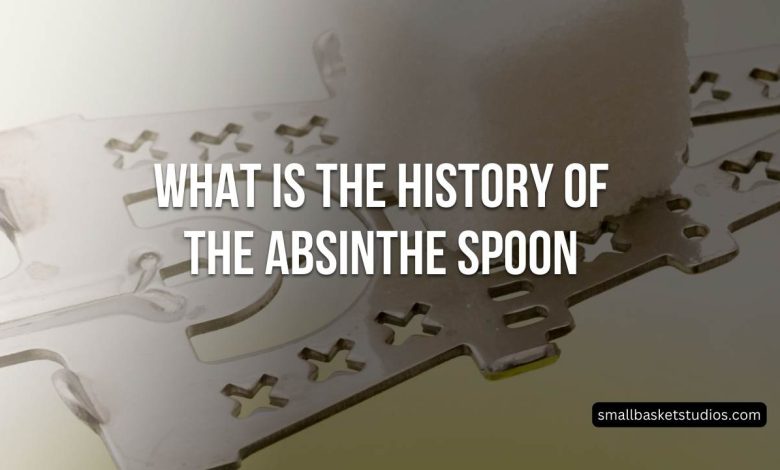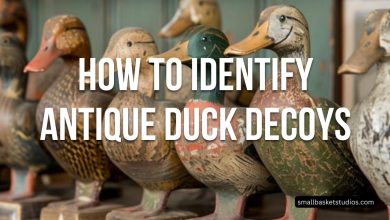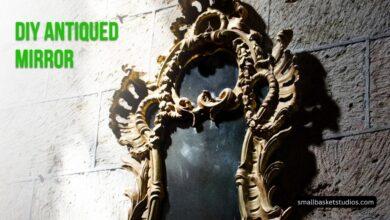What Is The History Of The Absinthe Spoon?

In the realm of culinary and cultural curiosities, few items have captured the imagination quite like the absinthe spoon. With its delicate yet purposeful design, this utensil has transcended its functional role to become a symbol of the allure and mystique surrounding the infamous spirit known as absinthe. Shrouded in myths and legends, the history of the absinthe spoon is a captivating tale that intertwines with the rise and fall, and eventual renaissance, of the enigmatic green fairy.
The Origins of Absinthe and Its Ritualistic Consumption
Before delving into the absinthe spoon’s journey, it is essential to understand the context in which it emerged. Absinthe, a potent and complex spirit flavored with a blend of botanicals, including the controversial wormwood, rose to prominence in the late 18th century. Originating in Switzerland, this emerald elixir swiftly gained a devoted following among artists, writers, and intellectuals, who were drawn to its alleged mind-altering properties and the ritualistic nature of its consumption.
The traditional method of preparing and enjoying absinthe was an elaborate affair, involving a series of precise steps that elevated the experience to an almost ceremonial level. This ritual began with the placement of a sugar cube atop a specially designed absinthe spoon, which would rest precariously on the rim of a glass filled with the potent spirit. Icy-cold water was then slowly dripped over the sugar cube, causing it to dissolve and release its sweetness into the absinthe, diluting the high alcohol content and unlocking the complex flavors and aromas that had been carefully crafted.
The Emergence of the Absinthe Spoon: Form and Function Intertwined
As the popularity of absinthe grew, so too did the demand for accoutrements that enhanced the drinking experience. Enter the absinthe spoon, a simple yet ingenious utensil designed specifically for this purpose. Crafted from various materials, including silver, glass, and even intricately carved Mother of Pearl, these spoons were not mere functional tools but works of art in their own right.
The earliest absinthe spoons were relatively simplistic, often featuring a flat or slightly curved surface upon which the sugar cube would rest. However, as the absinthe craze swept across Europe, artisans and metalworkers began to embrace the spoon as a canvas for their creativity, adorning them with intricate designs, intricate engravings, and ornate flourishes.
One of the most distinctive features of the absinthe spoon was its slotted or perforated design, which served a practical purpose. As the icy water dripped onto the sugar cube, the slots allowed the sugar-infused liquid to trickle into the absinthe below, ensuring a thorough and even dilution. This ingenious design not only enhanced the ritual but also added an air of sophistication and elegance to the experience.
The Golden Age of Absinthe and Its Accompanying Spoons
The late 19th and early 20th centuries marked the golden age of absinthe, and with it, the absinthe spoon reached new heights of artistry and craftsmanship. Renowned manufacturers and silversmiths from across Europe, particularly in France and Switzerland, embraced the challenge of creating spoons that were not only functional but also visually stunning.
One of the most celebrated makers of absinthe spoons was the French silversmith Maison Henin, whose intricate creations featured intricate engravings, delicate filigree work, and exquisite motifs inspired by nature and the Art Nouveau movement. These spoons were not merely utensils but true works of art, embodying the spirit of the era and the allure of the green fairy.
Other notable manufacturers, such as Gallia and Ungemach, also contributed to the artistry of absinthe spoons, each with their own unique styles and designs. From sleek and minimalist to ornately adorned, these spoons became coveted collectibles, representing the height of craftsmanship and the cultural significance of absinthe itself.
The Decline and Resurgence: Absinthe Spoons as Artifacts of a Bygone Era
As the 20th century progressed, however, the once-revered absinthe fell victim to a wave of moral panic and misinformation. Falsely accused of causing madness and hallucinations, absinthe was banned in many countries, including France, its birthplace. This prohibition effectively brought an end to the golden age of absinthe and, by extension, the production of the iconic absinthe spoons.
For decades, these intricate utensils remained relegated to the realm of antiques and curiosities, their true purpose all but forgotten. However, in the late 20th century, a renewed interest in absinthe began to brew, fueled by a resurgence of interest in the spirit’s rich history and cultural significance.
As absinthe reentered the market, so too did the demand for authentic absinthe spoons. Collectors and enthusiasts alike began scouring antique shops and auctions, seeking out these rare and exquisite pieces, each one a tangible link to the rituals and traditions of a bygone era.
Today, the absinthe spoon has reclaimed its rightful place in the absinthe ritual, with modern manufacturers once again crafting these elegant utensils to cater to the growing demand. While some opt for sleek, contemporary designs, others pay homage to the ornate styles of the past, ensuring that the rich history and artistry of the absinthe spoon continue to be celebrated and appreciated.
The Artistry and Symbolism of Absinthe Spoons
Beyond their functional purpose, absinthe spoons have come to represent the allure and mystique that surrounds the emerald spirit. Each spoon is a unique work of art, embodying the craftsmanship, creativity, and cultural significance of the absinthe tradition.
The intricate designs and motifs adorning these spoons often reflect the themes and influences of their respective eras. From the Art Nouveau-inspired floral patterns to the geometric and abstract forms of the Art Deco period, each spoon tells a story, capturing the essence of the time in which it was crafted.
Moreover, the materials used in their construction hold symbolic significance. Silver, with its lustrous sheen and longevity, represents the enduring appeal of absinthe and the rituals surrounding its consumption. Mother of Pearl, with its iridescent beauty, evokes the enchanting allure of the green fairy, while glass spoons offer a more understated elegance.
In the modern era, the absinthe spoon has transcended its functional role to become a collector’s item and a symbol of the ongoing fascination with this enigmatic spirit. Artisans and designers continue to push the boundaries of creativity, crafting spoons that not only honor the traditions of the past but also embrace contemporary aesthetics and innovative techniques.
The Absinthe Ritual: A Timeless Tradition
While the absinthe spoon is undoubtedly a captivating piece of history in its own right, its true significance lies in its role within the absinthe ritual. This ceremonial process, steeped in tradition and etiquette, is an integral part of the absinthe experience, elevating it to a level far beyond mere consumption.
The ritual begins with the preparation of the absinthe, a carefully crafted blend of botanicals and high-proof spirit. The absinthe spoon is then placed across the rim of the glass, supporting a sugar cube that will be slowly dissolved by the dripping of icy-cold water.
As the water cascades over the sugar cube and into the absinthe, the once-vibrant emerald hue transforms into an opalescent, milky shade, a process known as the “louche.” This transformation is a visual spectacle, adding to the mystique and allure of the ritual.
The slow and deliberate nature of the ritual invites contemplation and savoring, encouraging the imbiber to appreciate the complex flavors and aromas that unfold with each sip. It is a moment of indulgence, a respite from the hustle and bustle of everyday life, where one can embrace the rich cultural heritage and traditions that have been passed down through generations.
The absinthe spoon serves as a tangible link to this history, a physical embodiment of the artistry and craftsmanship that have accompanied the spirit throughout its storied journey. Each time it is used, the spoon becomes a conduit, transporting the imbiber to a bygone era where absinthe reigned supreme and the rituals surrounding its consumption were revered as sacred.
FAQs
Why is the absinthe spoon designed with slots or perforations?
The slots or perforations in the absinthe spoon serve a practical purpose. As the icy water drips onto the sugar cube, these openings allow the sugar-infused liquid to trickle down into the absinthe below, ensuring an even and thorough dilution of the spirit. This design not only enhances the ritual but also facilitates the proper preparation of the beverage.
Are all absinthe spoons made of silver?
No, absinthe spoons have been crafted from various materials throughout history. While silver was a popular choice, particularly during the golden age of absinthe, other materials like glass, Mother of Pearl, and even intricately carved bone or wood were also used. The choice of material often depended on the artisan’s preferences, the era, and the desired aesthetic.
Can absinthe spoons be used for purposes other than the absinthe ritual?
While absinthe spoons were designed specifically for the absinthe ritual, their unique and intricate designs have made them popular collectibles and decorative pieces. Many enthusiasts and collectors display these spoons as works of art, appreciating their historical significance and intricate craftsmanship. However, it is important to handle antique spoons with care to preserve their beauty and integrity.
Are modern absinthe spoons as ornate as their historical counterparts?
Contemporary absinthe spoon designs vary widely. While some manufacturers opt for sleek and minimalist designs, others pay homage to the ornate styles of the past, incorporating intricate engravings, filigree work, and elaborate motifs. The level of artistry and craftsmanship often depends on the manufacturer and the target market, with some spoons being mass-produced while others are handcrafted as limited editions or one-of-a-kind pieces.
How can I determine the authenticity and value of an antique absinthe spoon?
Authenticating and valuing antique absinthe spoons requires expertise and careful examination. Factors such as the maker’s mark, materials used, condition, rarity, and overall craftsmanship play a crucial role in determining the spoon’s authenticity and value. It is recommended to consult with reputable antique dealers, appraisers, or experts in the field to ensure accurate assessments.
Conclusion
The absinthe spoon, a seemingly simple utensil, has a rich and captivating history that extends far beyond its functional purpose. From its humble beginnings as a practical tool for the absinthe ritual to its transformation into a symbol of artistry, craftsmanship, and cultural significance, the absinthe spoon has woven itself into the tapestry of absinthe’s storied past.
As we trace its journey through the golden age of absinthe and its subsequent decline, we are reminded of the enduring allure of this enigmatic spirit and the traditions that have surrounded it. The absinthe spoon is not merely an accessory but a tangible link to a bygone era, a physical embodiment of the passion, creativity, and reverence that once defined the absinthe experience.




